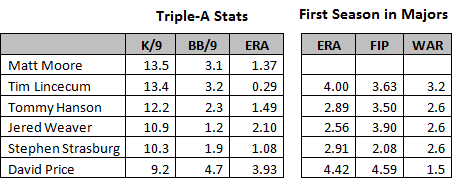- 191
- 10
- Joined
- Jan 17, 2009
The risk for injury inherent in all athletics for all athletes is simply not a good enough reason for Strasburg not to pitch when healthy.Originally Posted by abovelegit1
That's pretty much what I said, but with different wording. And I'm not saying he will get more healthy, but sitting out does eliminate any chance of him getting hurt again, even if it is only that risk that belies with every athlete. The risk is still there and he's your star pitcher going forward so i'd forget it.
I still don't think pitching right now makes any substantial difference. Whether it's 50 innings this year compared to 0 innings this year and a full season next year, the disparity is still big and might have a minimal impact.
And 50 innings is quite substantial in terms of progressive arm buildup compared to no innings at all at any level. If he wants to handle a somewhat significant workload next season, he absolutely should have something to build off of from the previous season. The Nats did the same with Jordan Zimmerman: a year after TJS he came back last season and pitched about 50 innings. This season he has been outstanding.
Regardless, the doctors and trainers are the most informed about the situation, and thus made the decision they did.
I can agree with the point you're making, but I still think it's not that important he gets in there right now.
Do you really think he gets 50 innings though? I don't think he gets anywhere close to that. Maybe 35 max, but more around 25 or 30.








